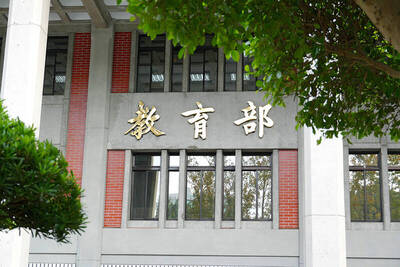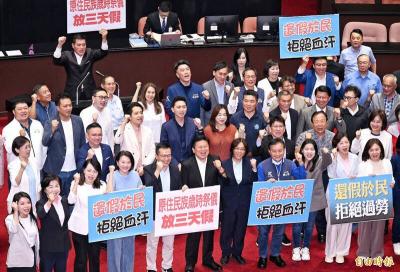Citing his own experiences at a press conference to launch his autobiography in Taipei yesterday, exiled Tibetan Buddhist master Arjia Rinpoche accused the Chinese government of trying to control and manipulate religion.
Born in 1950 and confirmed as the reincarnation of the seventh Arjia Rinpoche in 1952, Arjia Rinpoche — who is an ethnic Mongolian — was sent to Kumbum Monastery in Qinghai Province, thinking that he would lead a life as a simple monk.
However, Chinese occupation of Tibet and the Chinese government’s attempt to wipe out religion changed the course of his life.
“One day [in 1958], all monks at Kumbum Monastery were called to attend a meeting. At the meeting venue, we found ourselves surrounded by Chinese officials, police and military personnel carrying guns,” Arjia Rinpoche said. “The officials announced that they wanted to break feudalistic superstitions, and all of a sudden some militiamen came out and arrested more than 500 monks.”
Although Arjia Rinpoche escaped arrest, he was forced to attend Chinese school and work in labor camps for the following 16 years.
As a result of the Chinese government’s “religious reform” and the Cultural Revolution — which lasted from 1966 to 1977 — the number of monks at Kumbum Monastery decreased from more than 4,000 to just 50, with many monasteries destroyed and monks sent to labor camps.
In his family alone, as many as 29 people were sent to labor camps, Arjia Rinpoche said.
Despite the Chinese government’s attempt to destroy Buddhist culture, Tibetans kept the culture alive even in the labor camps.
“Older monks always told us to continue our studies of Buddhism, we did not have books — because they were banned — but the older monks had memorized all the Buddha’s teachings, and they secretly passed the knowledge to us,” Arjia Rinpoche said.
Following the political rise of Chinese Communist Party member Deng Xiaoping (鄧小平) after the Cultural Revolution, the Chinese government’s policy on religion loosened a little bit, allowing Arjia Rinpoche and other monks to return to monasteries.
However, the selection of the 11th Panchen Lama made him decide to go into exile.
Following the death of the 10th Panchen Lama in 1989, an 11th Panchen Lama was quickly found and confirmed by the Dalai Lama.
However, the Chinese government refused to recognize the 11th Panchen Lama and took the 6-year-old boy away, insisting on finding its own 11th Panchen Lama.
Arjia Rinpoche — along with many other respected Tibetan Buddhist masters — was forced to attend a ceremony to draw the name of the 11th Panchen Lama from a golden urn held by the Chinese government in 1990.
He said that he did not want to attend the political-religious show, especially when drawing lots from a golden urn was not originally a Tibetan tradition, but a measure imposed by the Chinese Emperor Qianlong.
Although the name-drawing event proceeded smoothly, Arjia Rinpoche was shocked when he was told by the Chinese Bureau of Religious Affairs director Ye Xiaowen (葉小文) that the ivory lot with the name of the child that the Chinese government wanted to become the 11th Panchen Lama was made longer so that the lot drawer would know which to pick.
“I was shocked when I heard this, because it was disrespectful to our religion and to my beliefs. They also wanted me to be the teacher of the new Panchen Lama,” Arjia Rinpoche said. “I simply couldn’t do it, so I decided to go into exile in 1998.”
Also attending the press conference, Democratic Progressive Party Legislator Hsiao Bi-khim (蕭美琴) — who is a long-term supporter of the Tibetan cause — said Taiwanese should learn from the lesson, while urging Taiwanese to render their support for the Tibetans and the Chinese in their struggle for freedom.

The Ministry of Education (MOE) is to launch a new program to encourage international students to stay in Taiwan and explore job opportunities here after graduation, Deputy Minister of Education Yeh Ping-cheng (葉丙成) said on Friday. The government would provide full scholarships for international students to further their studies for two years in Taiwan, so those who want to pursue a master’s degree can consider applying for the program, he said. The fields included are science, technology, engineering, mathematics, semiconductors and finance, Yeh added. The program, called “Intense 2+2,” would also assist international students who completed the two years of further studies in

The brilliant blue waters, thick foliage and bucolic atmosphere on this seemingly idyllic archipelago deep in the Pacific Ocean belie the key role it now plays in a titanic geopolitical struggle. Palau is again on the front line as China, and the US and its allies prepare their forces in an intensifying contest for control over the Asia-Pacific region. The democratic nation of just 17,000 people hosts US-controlled airstrips and soon-to-be-completed radar installations that the US military describes as “critical” to monitoring vast swathes of water and airspace. It is also a key piece of the second island chain, a string of

Taiwan will now have four additional national holidays after the Legislative Yuan passed an amendment today, which also made Labor Day a national holiday for all sectors. The Chinese Nationalist Party (KMT) and Taiwan People’s Party (TPP) used their majority in the Legislative Yuan to pass the amendment to the Act on Implementing Memorial Days and State Holidays (紀念日及節日實施辦法), which the parties jointly proposed, in its third and final reading today. The legislature passed the bill to amend the act, which is currently enforced administratively, raising it to the legal level. The new legislation recognizes Confucius’ birthday on Sept. 28, the

A magnitude 5.9 earthquake that struck about 33km off the coast of Hualien City was the "main shock" in a series of quakes in the area, with aftershocks expected over the next three days, the Central Weather Administration (CWA) said yesterday. Prior to the magnitude 5.9 quake shaking most of Taiwan at 6:53pm yesterday, six other earthquakes stronger than a magnitude of 4, starting with a magnitude 5.5 quake at 6:09pm, occurred in the area. CWA Seismological Center Director Wu Chien-fu (吳健富) confirmed that the quakes were all part of the same series and that the magnitude 5.5 temblor was